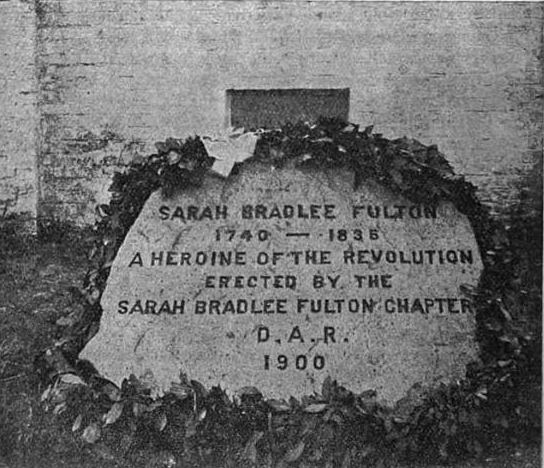Described as the “mother” of the Boston Tea Party, Sarah Bradlee Fulton (1740-1835) is credited with the idea of disguising the men who participated in that event in Native American-style clothing and later disposing of their disguises.
While this story is open to interpretation, her valor did not end there. During the Battle of Bunker Hill, Fulton, a prominent leader of the Daughters of Liberty, organized women to nurse wounded soldiers. A year later in March of 1776, she purportedly traveled alone across enemy lines to deliver an urgent message to General George Washington, who later visited the Fulton home in appreciation. Since 2006, the punchbowl she supposedly used when Washington visited has been in the collection at Mount Vernon.¹
When a shipment of wood, meant for American troops in Cambridge was confiscated by the British, she went in pursuit, reportedly grabbing a pair of oxen by the horns and leading them away, even as the British prepared to shoot her. Defiant, Fulton purportedly told them to “shoot away.” Stunned by her defiance they surrendered without resistance. Afraid of neither man or beast, Sarah later told her grandson that she “never turned her back on anything.”
A hero of the American revolution, Fulton was buried in Medford’s Salem Street Burying Ground in 1835. Some sixty years later, in the 1899 Medford Historical Society Papers (Volume 2) Helen Tilden Wild evokes Fulton’s passing, the founding of a chapter of the Daughters of the American Revolution in the city of Medford in her name and their subsequent efforts to erect a ‘tablet” in Fulton’s memory, which was dedicated on May 26, 1900.
Tilden describes the tablet as “a rough slab of native granite, set on a foundation of field stone” that was furnished and installed by the City of Medford. She notes that the stone originated from the threshold of Fulton’s home, a witness to both the glad and sad days of Fulton’s long and useful life.
The dedication ceremony was a simple affair, with the pastor of the First Parish Church, which Fulton attended offering the invocation. The State Regent of the Daughters of the American Revolution provided an overview of Fulton’s patriotic deeds according to Tilden “enjoining the audience and through them, the people of Massachusetts, to emulate the devotion to the country which she [Fulton] possessed.” Following a poem, William Cushing Wait, Esq. an ancestor of Fulton’s reminisced about her – first as a mother, then as a patriot.
The ceremony concluded with a benediction and the simple memorial, wreathed in laurel with the colors of the Daughters of the American Revolution inscribed with the words below:
Sarah Bradlee Fulton
1740-1835
A Heroine of the Revolution
erected by the
Sarah Bradlee Fulton Chapter, D. A. R.
1900
In the words of the Regent of the Chapter, as recollected by Tilden, ‘The memory of the lives of those noble women of a hundred years ago is a legacy to every American woman, a trust to be proud of, and one to be administered in the spirit of unselfish devotion, lofty purpose, and true womanhood.’
In addition to this stone marker, Fulton Street in Medford is named for her, while the local non-profit Looking Back at Medford History sponsors Sarah Bradlee Fulton Day at Medford’s Salem Street Burying Ground each fall and is actively fundraising to erect a statue in her honor.


